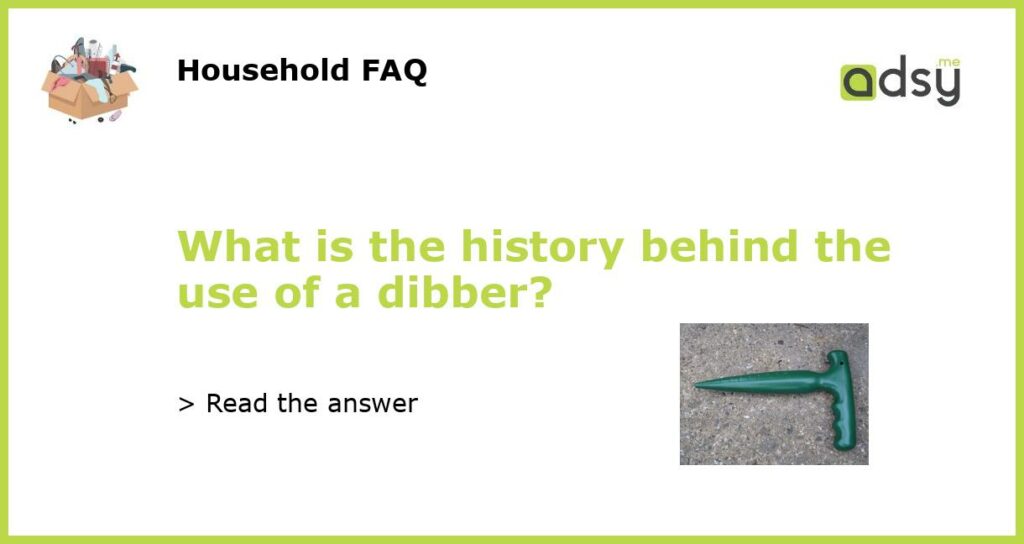What is a dibber?
A dibber is a tool used for making holes in soil in order to plant seeds, seedlings or cuttings. It is made of wood or metal and has a pointed end that allows gardeners to create precise holes without disturbing the surrounding soil.
The history of the dibber
The dibber has been used for centuries, with evidence of its use dating back to Roman times. However, it was during the 16th and 17th centuries in England that the dibber became popular amongst gardeners.
During this time, formal gardens were becoming increasingly popular, and with them came the need for precise planting methods. The dibber was the perfect tool for this task, and its popularity grew as a result.
Different types of dibbers
Over time, various types of dibbers have been developed to suit different planting needs. Some dibbers have a flat end, which is useful for creating furrows in the soil for planting rows of seeds.
Others have a wider, flatter tip that is suitable for planting larger seeds or bulbs, while some have a tapered end that makes it easier to create small holes for delicate seedlings or cuttings.
The modern-day dibber
Today, the dibber is still widely used by gardeners around the world. While some people still prefer traditional wooden dibbers, others opt for sleeker, more modern designs made of metal or plastic.
Despite the changes in materials and design, the basic function of the dibber remains the same, and it continues to be an essential tool in any gardener’s kit.
The dibber may be a simple tool, but its history and continued use in modern-day gardening show the importance of precision and attention to detail in creating beautiful gardens. Whether you’re an experienced gardener or just starting out, a dibber is a must-have tool that will help you plant with accuracy and ease.






